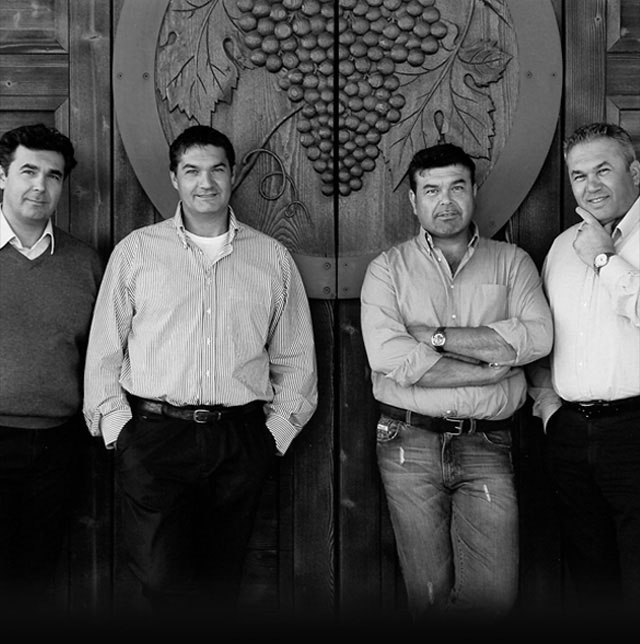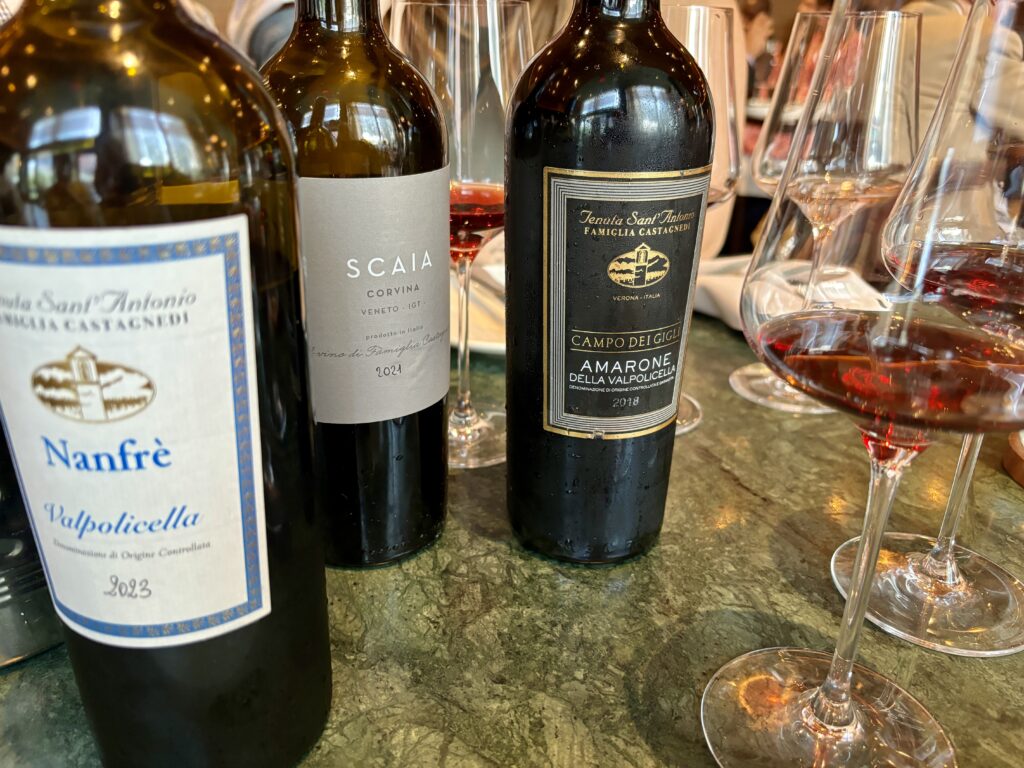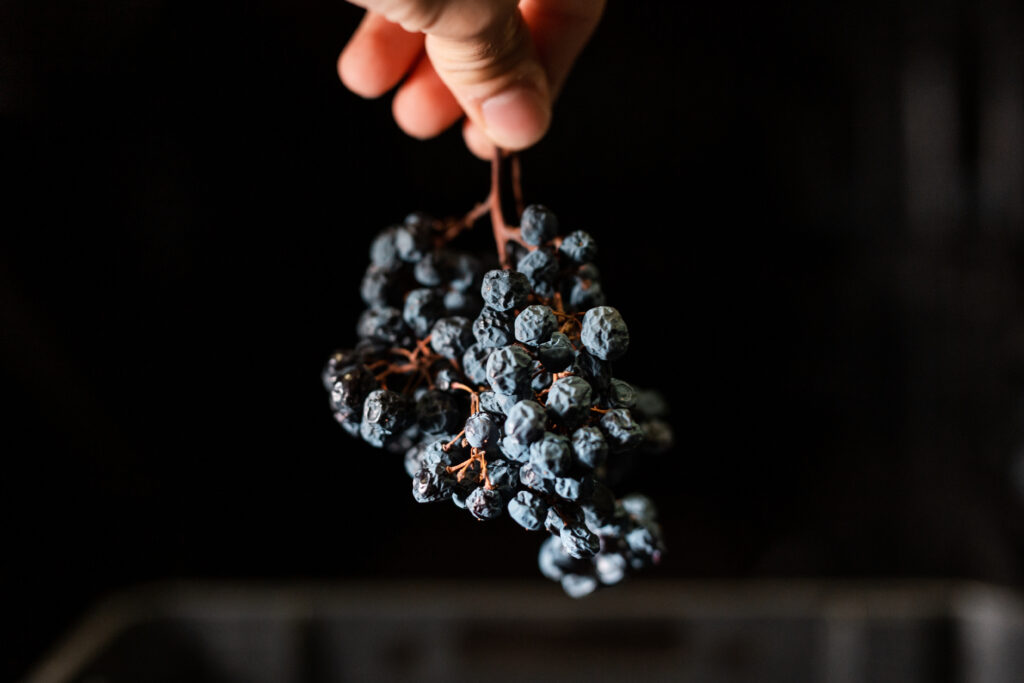At wine tasting and lunch with Armando Castagnedi, owner of Tenuta Sant’Antonio family winery in Italy’s Veneto region, I solved this riddle. Q: What is even better than one charming, skilled, prestigious Italian wine producer? A: Four of them that share the same vision and even the same surname.

Armando (far right) and his brothers — Tiziano, Paolo, and Massimo — are the foursome behind Familia Castagnedi, known for their distinguished single vineyard production of the great wines in the Veronese tradition: Amarone, Valpolicella, and Soave.

Valpolicella rocks: Organically farmed wines are produced from the chalky and granular soils of eastern Valpolicella.

Not far from the vineyards where the brothers played as children, they took the far-sighted decision to purchase land in the rugged and steep Monti Garbi, now an agricultural site renowned for innovative wine growing.

Now approaching a 30-year milestone in the history of the brand, the Castagnedi brothers’ dream is alive and well in the hills above Verona, known worldwide as the City of Love.

Amarone is a Valpolicella that’s aged for two years.


The Veneto region is famous for Valpolicella (translation: ‘the land of many cellars’), a youthful red wine blend for which the main grape variety is Corvina at 45%-95%. Ripasso is an ancient wine making technique used in Valpolicella wineries to produce medium-bodied wine of higher alcohol content. The ‘ripasso’ process begins with the best red grapes selected from harvest, left to dry for three months before being pressed and fermented. Then, the wine undergoes a re-fermentation with the dried skins and seeds (pomace) which are left over after the pressing of Amarone wine.



Monti Garbi Valpolicella Ripasso Superiore DOC is a traditional wine in which a second fermentation takes place, adding body and complexity.
Amarone grapes are air-dried for about 90 days, losing about 30% of their natural water, so the resulting grapes look like raisins.

In addition to crafting high-end Veneto wines, Armando and his brothers produce creative, contemporary wines for their Scaia label. Originally intended to be a temporary outlet for young vines on their path to maturity, the wines became so popular that the line was continued.
The salmon-hued 2023 Rosato is quite
distinctive and complex, opening with an
herbaceous nose of thyme, rosemary and
grilled peaches. Bright, juicy and energetic in
the mouth, exotic spice notes develop with air,
wrapping around a core of tart cherry-berry
fruit. — Vinous
By circumventing certain regional customs, Scaia wines offer a fresh twist on tradition, producing standalone wines from varietals that are usually blended and also blending varietals that aren’t typically intermingled. Delightful and refreshing — I loved the rosé on a warm New York City afternoon — Scaia wines have with an affordable price tag for everyday enjoyment.

More good news—You can find Tenuta Sant’Antonio wines in the U.S., on menus in select restaurants, via suppliers online, or in your favorite wine specialist shops.
